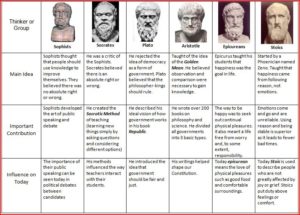[Greek] αἵρεσις (hairesis), [Latin] hairesis, [Latin] secta, [Latin] dissensio: faction, opinion, party, division, a choosing, sect, choice; Act. 5:17, Act, 15:5, Act.24:5,14, Act.26:5, Act.28:22, 2 Pet.2:1, 1Cor.11:17-19, Gal.5:20

Various schools of thought
Background Information:
Greek Hellenism: This term means doctrine, school, seizure, choice, inclination, teaching, resolve, and inclination. This term takes on the idea of a school, thought, or philosophy. These teachngs attained a gathering of students with a self-chosen teacher/master. The doctrines were exclusively defined. Herodotus’ The Histories 9.3 states “What he decided was to take Athens once more. Aeschylus’ Prometheus Bound 779 states “Set them forth and offer me the choice.” Plato’s Phaedrus 256c states “They continue the practice, but infrequently, since what they are doing is not approved by the whole mind.”
Old Testament: The Jewish leaders mainly consisted of the Sadducees, Pharisees, and the scribes. The Sadducees were the conservative priestly class who only accepted the written Law of Moses. The Pharisees were a lay group who accepted the Old Testament and the tradition of the elders. The scribes were leaders who wrote, copied and interpreted scripture
New Testament: This term means party, sect, division, and heresy. The sect of the Sadducees were jealous of the Apostles’ popularity. The sect of the Pharisees said it was necessary to circumcise and observe the Mosaic law. Paul was considered the ringleader of the sect of the Nazoreans who followed Jesus. In Rome, the Christian sect’s teachings were denounced. Paul saw divisions among the Christians in Corinth. False teachers will introduce destructive heresies, deny God and bringing destruction upon themselves.
Scripture:
“There were also false prophets among the people, just as there will be false teachers among you, who will introduce destructive heresies and even deny the Master who ransomed them, bringing swift destruction on themselves.” 2 Pet. 2:1
This letter, written around 75 A.D., was written to the churches in Asia Minor (Turkey). This letter was written to those new Christians recently converted from paganism. These factions were falling back into their sinful pagan nature.
“First of all, I hear that when you meet as a church there are divisions among you, and to a degree I believe it. There have to be factions among you in order that also those who are approved among you may become known.” 1 Cor.11:18-19
There are problems of schism and sedition in Corinth. The persecution of the Emperor Domitian was beginning against the Church. This was leading to the breakdown of relationships in the Church. The younger generations were deposing the older Corinthian church leaders. The younger generations were now declaring themselves as the authorities.
What problems did Paul see in Corinth? Paul saw schism, sedition, divided parties, opens sexual immorality, doctrinal heresy, liturgical abuses, problems with the state of marriage, and Christians settling disputes in pagan courts.
Conclusion:
Heresy, heretical
From this comes the words heresy and heretical. It is interesting to note how the meaning of heresy had evolved over time. Heresy begins as a neutral idea of a school of thought to a more serious issue/crisis for the Church.
